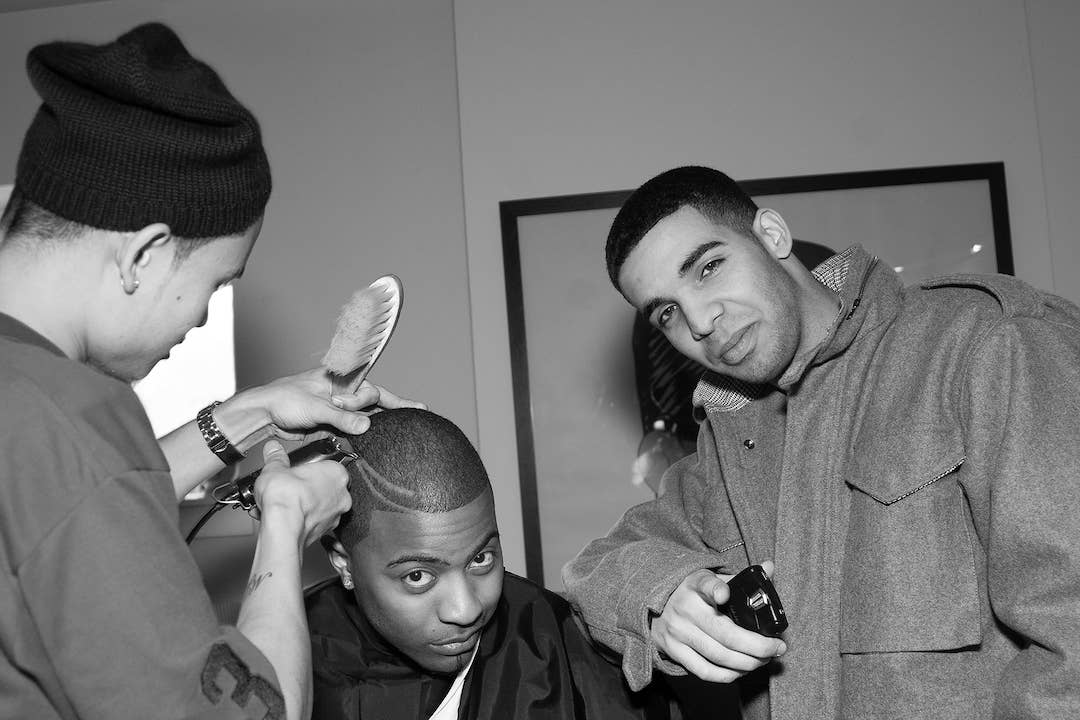
For over a decade and a half, Canadian photographer, producer, director, and mental health advocate Ajani Charles has been quietly documenting Toronto’s hip-hop scene through black-and-white photography—his images often striking and distinguishable portraits of recognizable artists. Charles has shot some of the city’s most prolific figures in music, some well-known pillars in the community, and others whose impact was less obvious to outsiders but crucial to the 6ix’s musical success nonetheless. He’s captured spitting-distance concert photos of Drake and The Weeknd before they became international superstars, as well as intimate moments of close friends like Director X while in his home.
His new exhibit, Project T-Dot, is currently being displayed on the walls Toronto’s City Hall at Nathan Phillips Square until September 2022. It features over 30 photographs of important moments in Toronto’s hip-hop history and people who are and continue to be monumental in sharing the city’s music community with the rest of the world. The exhibit is free and open to the public.
Project T-Dot isn’t just a photographic installation for Charles, as his work is multi-faceted. He plans to turn it into an all-encompassing movement that includes a book, a mini-documentary, an online platform, and eventually, a youth-focused nonprofit. Ajani isn’t only trying to tell the story of Toronto’s hip-hop scene—he’s living and observing it every single day.
We spoke to Ajani about Project T-Dot and some of the photos he chose to display. While he assures us that everyone he chose to feature is fundamentally important to the music scene in their own way, he also says this isn’t the last Project T-Dot exhibit. There are many more people he would like to and plans to feature in the future.
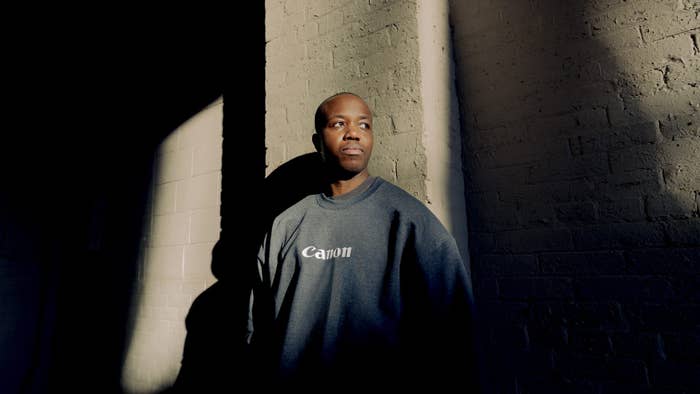
Congratulations on launching Project T-Dot. I saw you mention that the exhibit is a documentary of Toronto’s hip-hop community, which I thought was really cool.
Yeah. Project T-Dot is a documentary project on Toronto’s hip-hop community that I started in December 2006. I came up with a name in January of 2007, at a rap battle at the El Mocambo, which is at Spadina and College St. in Toronto. I was just so inspired by the images that I shot at that rap battle, by the energy at the El Mocambo that night, and by the fact I was very energized and motivated to get my professional photography career going—I had made the decision in December of 2006 to proceed down the path that I’m on. So I came up with Project T-Dot and I decided to document Toronto’s hip-hop community in its entirety, not only the musical aspect of Toronto’s hip-hop community, but also the many other aspects of the community, including, but not limited to break dancers, choreographers, journalists like yourself, photographers, filmmakers, and community leaders, graffiti artists, and so on and so forth.
And now your exhibit is displayed outside of Toronto City Hall…
There are two banners displayed on Nathan Phillips Square, which is a major landmark that’s directly connected to Toronto City Hall. The vast majority of the exhibit is directly on the exterior of City Hall on the first and second floors. I believe it’s the first time that an exhibit like this has included the second floor of City Hall.

“I would say it’s the most culturally diverse hip-hop community in the world. It’s a great representation of the multiculturalism that defines Toronto.”
Can you explain a little bit about your process in choosing this space to display your work? Was this your decision or was it offered to you?
Yeah, basically, my colleague Laura Metcalf from the city, I’ve been working with her for years. She’s hired me for various city-funded projects since 2011. So she’s been a fan of my work for many years. In 2021, she hired me for speaking engagements, so I mentored youth on the cultivation of mental health with an emphasis on mindfulness. Mental health advocacy and the cultivation of mindfulness are major components of my career. A few months later, she contacted me and said that ArtworxTo, the public artworks division of the city, was looking for an artist to display their work directly on City Hall. She thought that it would be a good fit. The whole process of bringing the exhibit to fruition took eight months.
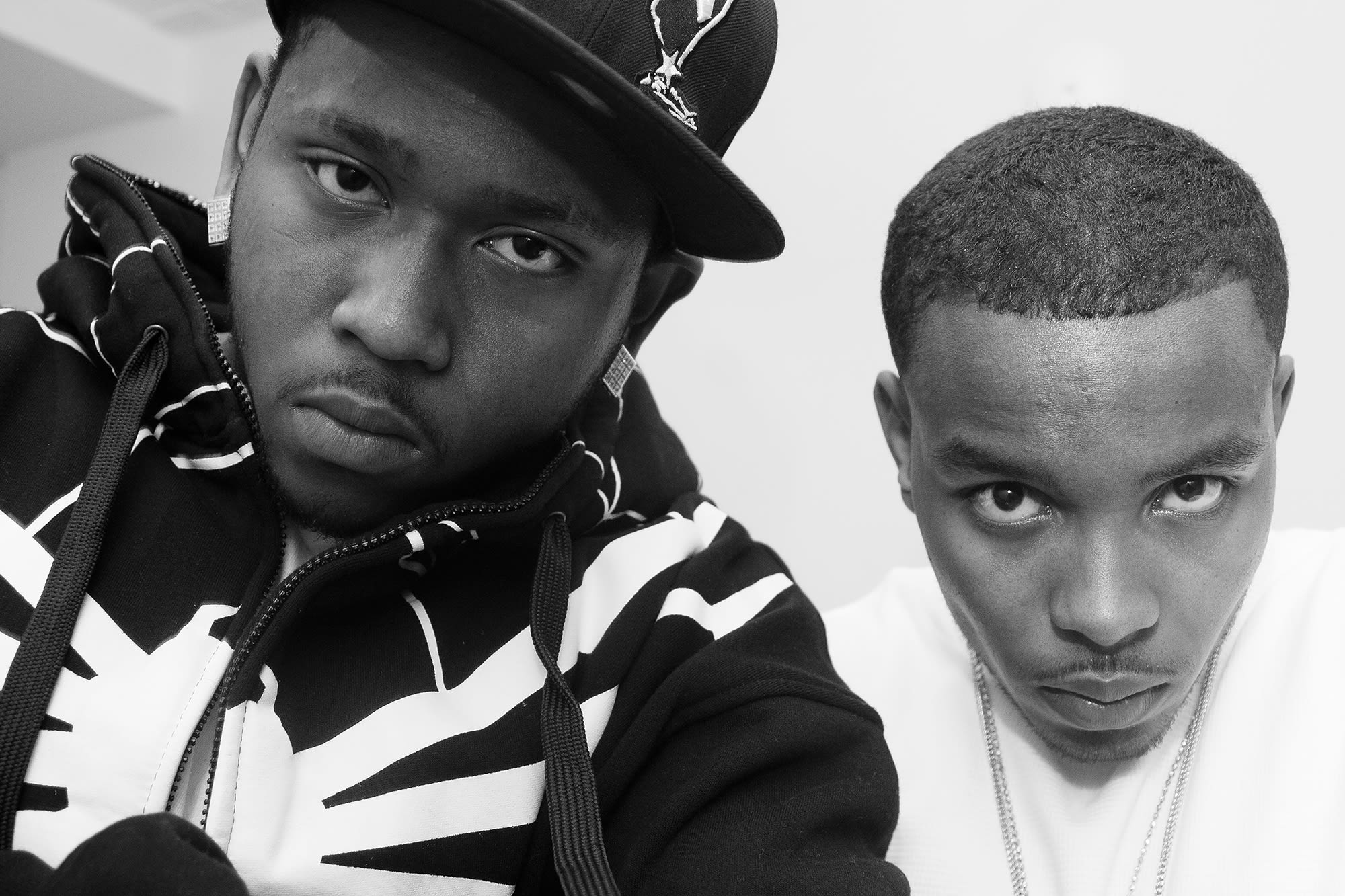
Do you want to walk us through some of the important figures that you photographed and chose to exhibit?
Yeah, I can talk about some of the figures in this exhibit based on their impact on Toronto’s hip-hop community, and how influential they’ve been over an extended period of time. But I would also say that every single person I photograph for projects is important in their own way. Even the fans in the crowd at certain events. They contribute to the cultural dynamics and the energy of Toronto hip-hop. And so one person is not necessarily more important than another. But I will talk about some of the individuals that have been highly influential.
DJ Started From Scratch: By far one of the most influential DJs in Toronto hip-hop history. One of the first people displayed in the exhibit that came to the exhibition, he came with his entire family. And he was so excited and grateful that he was part of the exhibit. I was surprised that he was so surprised that he was a part of it because he’s so influential. He’s such an important fixture in Toronto’s hip-hop history, and such a prolific DJ, not only of hip-hop but of many genres.
Matthew Samuels: Boi-1da is one of two producers that I believe have been instrumental to Drake’s incredible success. I met him on a music video set for a rapper named Richie Sosa. So this photograph is the day that I met him, and since the beginning of my career, he’s been a huge supporter of mine. He’s provided many words of encouragement. And initially, as Drake started blowing up, and also as Matthew won a Grammy, for “Not Afraid” with Eminem, I started asking him questions about how he was making these things happen. I remember on MSN Messenger, I asked him, “Do you have a manager?” And “should I get a manager?” because I was surprised at how rapidly he was progressing in his career. And I was really impressed by the fact that he said, “I don’t have a manager and you don’t need a manager.” He planted the seed in my mind that sales and the ability to communicate clearly to others are very important skills, generally, but especially within the context of business. So it’s very important for him to be a part of this exhibit, in my opinion.
“I looked into the crowd, and saw how mesmerized, and how fanatical his fans were at that concert. So this is a pivotal moment in Drake’s career. This is a pivotal moment for Toronto hip-hop.”
Drake: This image of Drake is that his first sold-out concert at the Sound Academy in 2009 as So Far Gone started to blow up. I shot this image about a meter away from him—I was standing beside him on stage. And at this point, I had been listening to Drake for half a decade and I was shocked that he was from Toronto because he didn’t sound like other Toronto rappers. I looked into the crowd, and saw how mesmerized, and how fanatical his fans were at that concert. So this is a pivotal moment in Drake’s career. This is a pivotal moment for Toronto hip-hop. This is a pivotal moment for the city because it’s his first sold-out concert as So Far Gone was starting to gain international popularity. I realized at that moment that he could not be put in the same category as other Toronto musicians.
The Weeknd: this was the first time that I ever saw his face. Up until this point, his team’s marketing strategy was to never reveal his face. [This was] soon after House of Balloons came out and the first time I heard house of balloons, I listened to two records and I thought to myself this is one of the best R&B soul artists I’ve ever heard in my life—I became a fan instantaneously. So in this image, he’s opening up for OVO Fest at the Molson Amphitheatre, which has a huge capacity, there must have been at most 1,000 people there when he was opening OVO Fest. And it’s really interesting because, at this point, he could sell out the Molson Amphitheatre by himself and people are trying to sneak in at the same time. So I shot this image, I believe, in 2010. And so much has happened in his life, his career, and in the world since then.
WondaGurl: who’s a prolific producer, who’s won many awards and platinum plaques. She’s in her early 20s now, but I believe she was a teenager when I shot this image in 2015 if I’m not mistaken. So yeah, she was at a Battle of the Beatmakers meet-up at the Post Office. And the Post Office is an audio engineering and production studio that I personally work through via my production company. So she’s very talented, and I felt that it was important that she should be included in this exhibit.
Director X: My colleague, mentor and friend Julian Christian Lutz—and in the background is one of his business partners – and they’re on my balcony in downtown Toronto. So I’m the Art Director for their organization Operation Prefrontal Cortex. What we’re doing is reducing gun violence and mass violence and police violence in Toronto through mindfulness and meditation. Since 2017 or so, the violence in Toronto has been escalating exponentially. It’s really bad here at this point. So we believe that mindfulness and meditation are some of the most effective long-term solutions to this violence. After Julian was shot at one of his own parties, a suit and tie party, I believe on New Year’s Eve, someone at the party was shot, and then the bullet went through that person and hit him—he started doing research on the most effective interventions to address impulsivity and violence. He found out through looking at a lot of scientific research that mindfulness and meditation were the best bets. As far as the hip-hop community is concerned he’s by far one of the most influential members of Toronto’s hip-hop community and the most prolific music video director in Canadian history. He’s helped so many people in Toronto’s hip-hop scene, and he’s influenced so many people directly and indirectly. Including him in this project and in this exhibit was a no-brainer from my perspective.
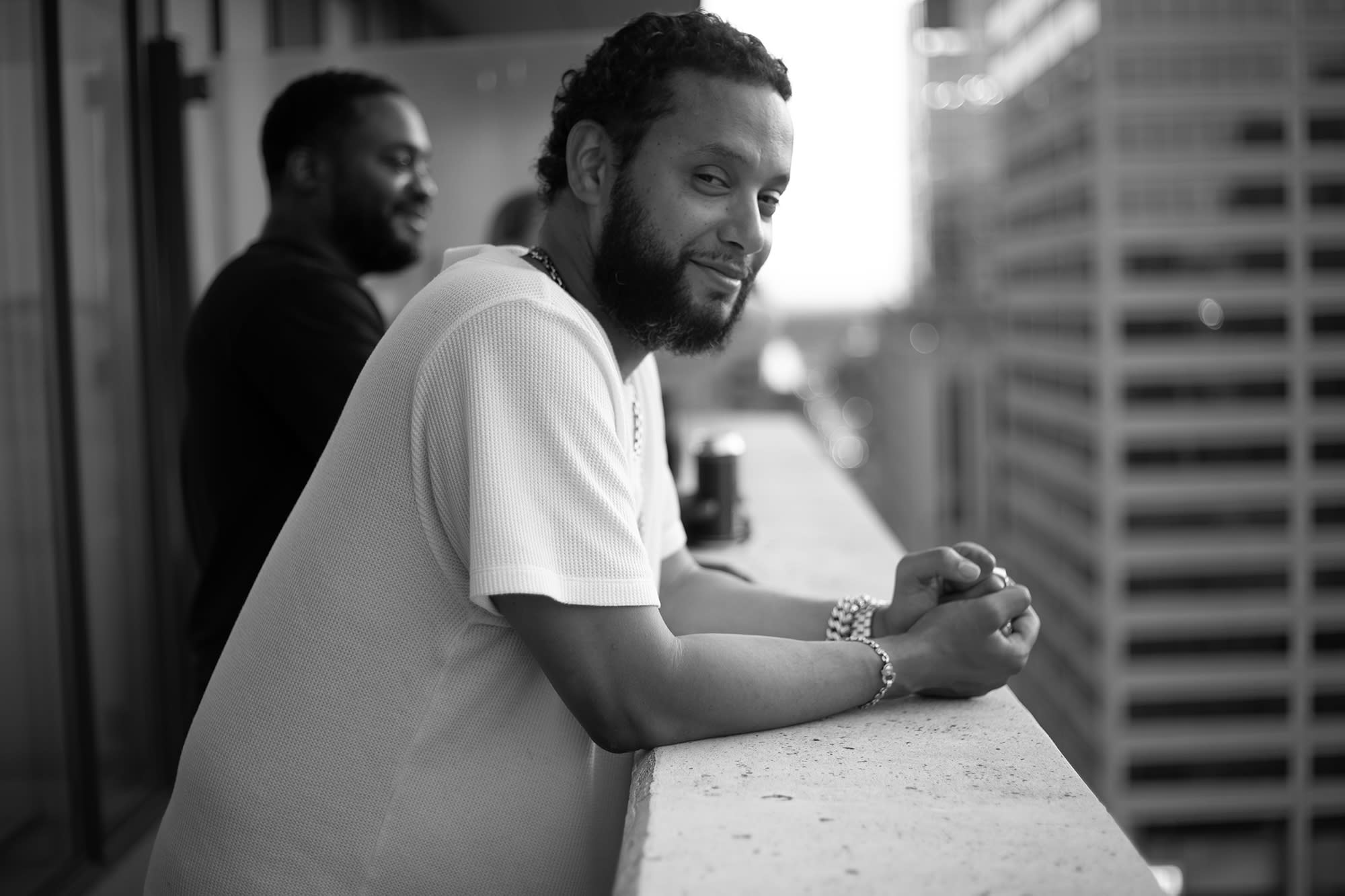
How would you describe Toronto’s hip-hop scene to an outsider?
I would say it’s the most culturally diverse hip-hop community in the world. It’s a great representation of the multiculturalism that defines Toronto, and Toronto’s hip-hop community has been hungry for international recognition. It’s one of the most resourceful hip-hop communities because there’s a lack of infrastructure and funding for Toronto’s hip-hop community yet many members, and many organizations of Toronto’s hip-hop community have done incredible things.
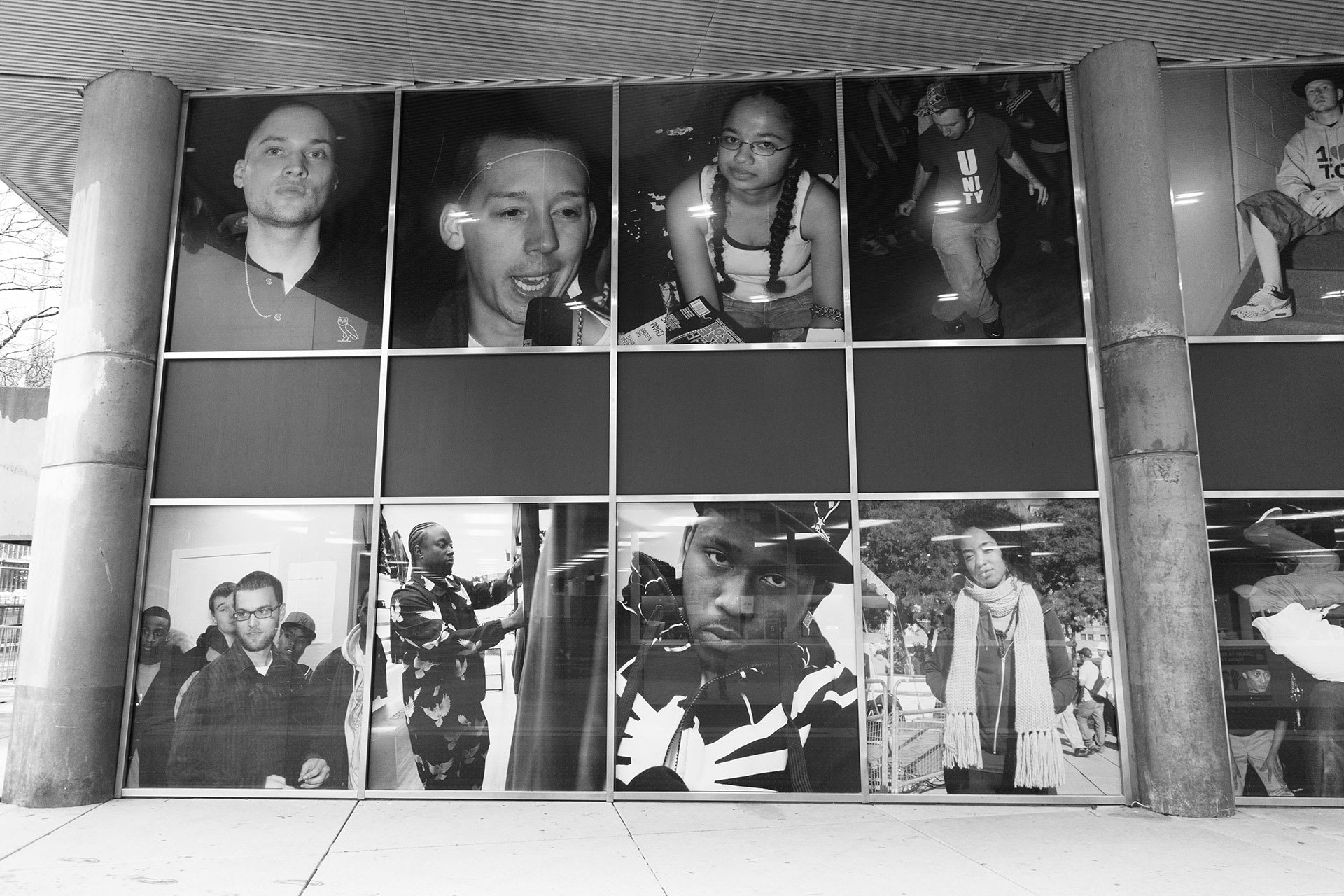
You said that there is more to the Project T-Dot movement outside of this exhibit—can you talk about your plans for this project?
Yeah, of course. So initially, due to lack of experience, lack of perspective, and lack of knowledge related to Toronto’s hip-hop community and history, initially, I thought that documenting Toronto’s hip-hop community through black-and-white photography would be enough for Project T-Dot. And by 2009 I felt satisfied with what I had done. I thought to myself, at this point, I’ve photographed hundreds of people for this project, I have a great visual representation of Toronto’s hip hop community—this project is done. Then I met with a colleague, friend and mentor of mine named Craig Goodwill. He’s a very talented filmmaker, and producer based in L.A. but he’s originally from Toronto. So, at that point in my career, I would frequently meet with photographers, entrepreneurs, and artists that I admired and I would ask them to critique my work—I’d ask them for advice. Many of them were gracious enough to give me a lot of great advice. So I showed my Project T-Dot photographs to Craig, and he loved the images but he said, “What’s the story here?” And that changed everything for me because it led me to realize that taking images of Toronto’s hip-hop community, and editing them in black and white was not enough. People want to know who these people are, how they relate to one another and how they’ve contributed to Toronto’s hip-hop community. How did Toronto’s hip-hop community come to fruition? Where is it going? So at that point, I realized that I had a lot more work ahead of me.
The project evolved into not only capturing images of Toronto’s hip-hop community and history but also telling the story of the individuals and organizations that have contributed to this amazing community. So the different components of Project T-Dot, most of which are incomplete in production, or will be in production include a coffee table book, a video-based mini-documentary, an online platform, and eventually, I want to create a nonprofit that teaches marginalized youth in Toronto how to monetize their hip-hop skills, their hip-hop talents, like a small scale version of the Remix Project, for example.

It sounds like you’ve got a lot more work ahead of you.
Yeah, so there are a lot of people who have mentioned online that they should have been in the exhibit, or someone that they know should have been in the exhibit. But in my mind, I’m thinking there’s going to be 40 more of these, so don’t worry about it.

